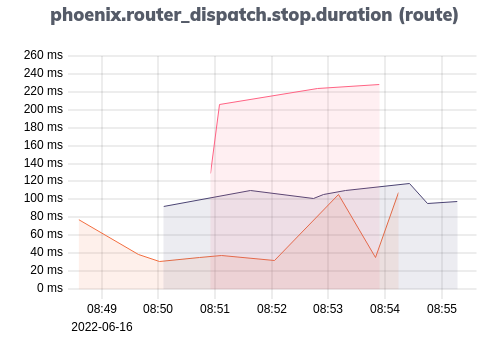I upgraded LiveView from 0.15.4 → 0.17.7 in March. I recently noticed that the duration has doubled from 35 to 70 ms since March which is quite confusing to me.
However, this could be caused by a few things:
- upgrading from 0.15.4 → 0.17.7
- a server change, however, it was moved to a beefier server
- preparing for localization and adding a great deal of gettext usage
I attempted to profile in several ways, but can’t seem to instrument the right place.
-
incendium uses eflame which uses :erlang.trace. Using master so that it works on newer phoenix, I added the decorator in various places:
- controller - works as expected. Elixir.Phoenix.Controller:render_and_send, Elixir.Plug.Conn:send_resp
- liveview mount - only shows the function
- liveview handle_params - only shows the function
- render - does not work - gives only :eflame.stop_trace, :eflame_trace, :erts_internal_trace
- router scope - does not work
- in app/lib/app_web.ex - decorating controller or view doesn’t work.
- I tried Profiler which uses :fprof under the hood and couldn’t get a useful trace either.
Anyone have ideas?





















